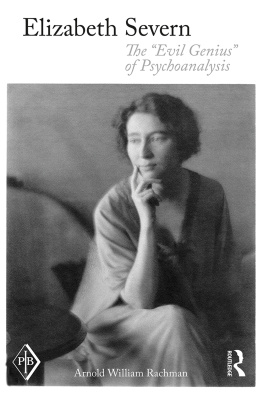Acknowledgments
The author would like to thank the Spastic Centre, Anthony Jinks,
and Peter Dockrill (and Elijah Wood for the visual inspiration!).
Copyright Catherine Jinks, 2005
All rights reserved. No part of this publication may be reproduced
or transmitted in any form or by any means, electronic or mechanical,
including photocopy, recording, or any information storage and retrieval
system, without permission in writing from the publisher.
Requests for permission to make copies of any part of the work should
be submitted online at www.harcourt.com/contact or mailed to the
following address: Permissions Department, Harcourt, Inc.,
6277 Sea Harbor Drive, Orlando, Florida 32887-6777.
www.HarcourtBooks.com
First published in 2005 by Allen & Unwin, Australia
First U.S. edition 2007
Library of Congress Cataloging-in-Publication Data
Jinks, Catherine.
Evil genius/Catherine Jinks.1st ed.
p. cm.
Summary: Child prodigy Cadel Piggott, an antisocial computer genius, discovers
his true identity when he enrolls as a first-year student at an advanced crime academy.
[1. GeniusFiction. 2. IdentityFiction. 3. CrimeFiction.
4. Good and evilFiction. 5. SchoolsFiction. 6. AustraliaFiction.
7. Science fiction.] I. Title.
PZ7.J5754Ev 2007
[Fic]dc22 2006014476
ISBN 978-0-15-205988-0
Text set in Ehrhardt MT
Designed by April Ward
E G H F D
Printed in the United States of America
This is a work of fiction. All the names, characters, places, organizations, and events
portrayed in this book are products of the author's imagination. Any resemblance
to any organization, event, or actual person, living or dead, is uninientional.
To Robert Jinks, without whose Professor Gangrene
doll this hook won hi not have keen written
ONE
Cadel Piggott was just seven years old when he first met Thaddeus Roth.
Dr. Roth worked in a row house near Sydney Harbor. The house was three stories high, its garden shrouded by a great many damp, dark trees. There was moss growing on its sandstone window ledges. Curtains drawn across all its windows gave it a secretive air. Its front fence was made of iron, with a spike on top of each post; beside the creaking gate was a brass sign bearing Dr. Roth's name and qualifications.
"That's it," said Mrs. Piggott. "Number twenty-nine."
"Well, we can't stop here," her husband replied. "No parking."
"I told you to park back there."
"It doesn't matter. We'll try down this street."
"Stuart, that's a one-way street."
"Dammit!"
"I knew we'd never find a space. Not around this area."
"Just shut up for a minute, will you?"
Mr. and Mrs. Piggott were not Cadel's real parents. They had adopted him when he was not quite two years old. Mrs. Piggott was thin and blond, Mr. Piggott fat and gray. They almost never agreed about anything, but that didn't matter because they almost never met. Their busy schedules kept them away from home, and one another, a good deal of the time.
At the suggestion of the police, however, they had both agreed to attend this interview.
"We're going to be late," Mrs. Piggott warned her husband after they had circled the block four times in Mr. Piggott's big, gleaming Mercedes-Benz. "Just let us out, for god's sake."
"I'll park here."
"Stuart, you'll never fit in there!"
"Watch me."
Cadel said nothing. He sat on the backseat, dressed in his good brown cords and a lamb's-wool sweater, staring out the window at Dr. Roth's house. He didn't like the look of it. He thought it had a murky, ominous appearance.
"I don't want to go," he said flatly when Mrs. Piggott got out and opened the door beside him.
"I know, honey, but we have to."
"No we don't," Cadel retorted.
"Yes we do."
"There were no formal charges," Cadel pointed out, in his high, clear voice. "It was just a suggestion."
"That's right," said Mr. Piggott, yanking Cadel out of the back of the car. "And when the police make a suggestion, you always follow it. Rule number one."
"Be careful, Stuart, you'll wreck his clothes."
Cadel was so smalleven for a seven-year-oldthat he didn't stand a chance against Mr. Piggott. Though he dragged his feet and hung off his adoptive parents' hands like a sack of melons, he was forced across the street and through the front gate of number twenty-nine. The path beyond the gate was mushy with wet leaves. There was a rich smell of decay. The door knocker was a ring in the mouth of a snarling lion's head, painted black, like the rest of the ironwork.
Cadel noted with interest the switchboard near the door. It was obviously ancient, full of porcelain fuses and dial meters. The Piggotts' own house was only three years old, with a state-of-the-art electrical system, so Cadel was fascinated by this dusty old relic.
But he was not permitted to gaze at it for long.
"Come on," Mr. Piggott barked. "The door's open." And he pushed against it, causing it to swing back and reveal a long, dark hallway carpeted with dingy Persian rugs. About halfway down this hallway, a staircase the color of walnut swept up to the next floor. There were several doors to the right of the front entrance, but only the closest stood ajar.
"Hello!" said Mr. Piggott, marching straight through it. He wasn't a man who normally waited for anything. "We've an appointment with Dr. Roth. For ten thirty."
Gripped firmly around the wrist, Cadel had no choice but to follow Mr. Piggott. He found himself in a reception area: two rooms divided by a pair of folding mahogany doors. There were two marble fireplaces and two chandeliers. Cadel noticed cobwebs on the chandeliers.
A woman sat behind an antique desk.
"Good morning," she said calmly. "What name, please?"
"Piggott," Mr. Piggott replied, in pompous tones. "Stuart, Lanna, and Cadel." He looked surprised when the woman rose, revealing herself to be almost as wide and as tall as he was. She had a broad, square face and small blue eyes. She was wearing a suit the color of dried blood.
"I'll just go and tell Dr. Roth that you've arrived," she declared, before lumbering out of the room. Cadel didn't watch her go. He was more interested in the computer that she'd left behind, with its alluring glow and contented hum. The screen saver was one that he'd never seen before: a pattern of falling dominoes.
"Don't even think about it," Stuart rasped when he realized what was attracting Cadel's attention. "Sit down. Over there."
"Look, honey, there are toys for you to play with," Lanna said, nudging a large basket with the toe of her expensive Italian shoe. Sulkily, Cadel eyed the basket's contents. He was used to the broken activity centers and torn books offered for the amusement of younger patients at his local doctor's office and wasn't hopeful about the distractions provided here.
But to his astonishment, he quickly spied an old voltmeter, together with a book on flies, a plastic human skull (life-sized), a Rubik's Cube, and a Frankenstein mask. Further investigation uncovered a dead spider embedded in a resin paperweight, a shark's tooth, a Galaxy Warrior complete with Thermopuncher torpedoes, and a very curious fragment of puzzle bearing the picture of a staring, bloodshot eye over a set of claw marks.
He was puzzling over this macabre image when the sound of heavy footsteps reached his ears. It seemed that Dr. Roth's receptionist was returning, clumping down the stairs like someone wearing ski boots. Lanna, who had flung herself onto an armchair, immediately jumped to her feet.
Stuart glared at the door.
"Dr. Roth will see you now," the receptionist announced when she finally appeared. "You can go straight up."
Stuart and Lanna exchanged glances.
Next page








